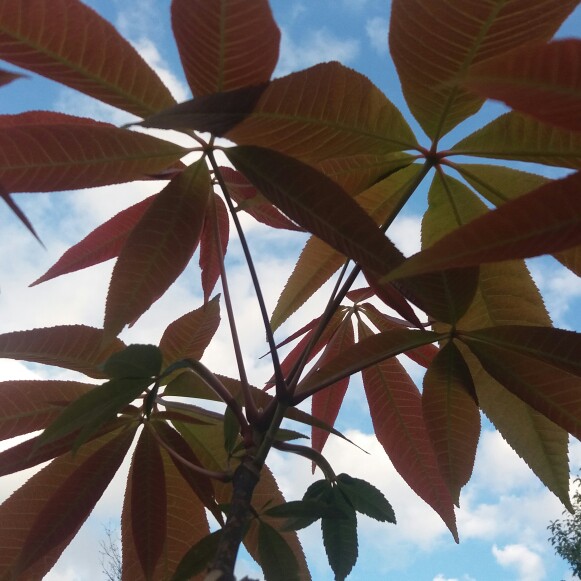
Aesculus wangii
Vietnamese horse chestnut
Aesculus wangii will form a very large tree in time. It produces large, palmate leaves comprised of 5-9 pointed leaflets on very short stalks. In spring, it produces enormous panicles of scented yellow, purple-brown spotted flowers followed by large encased seeds to 10cm. It is a native of Vietnam and is still quite rare and difficult to source.
Contributed by @schefflera
-
Full sun to partial shade
-
Occasional watering
-
Full Frost Hardy: 5F (-15°C)
-
All soil conditions
Common name
Vietnamese horse chestnut
Latin name
Aesculus wangii
type
Deciduous trees or shrubs
family
Sapindaceae
ph
5.0 - 8.5 Acid - Neutral
Plant & bloom calendar
-
Best time to plant
full grown dimensions
 20.00 M
30.00 M
20.00 M
30.00 M
Aesculus wangii
Aesculus wangii will form a very large tree in time. It produces large, palmate leaves comprised of 5-9 pointed leaflets on very short stalks. In spring, it produces enormous panicles of scented yellow, purple-brown spotted flowers followed by large encased seeds to 10cm. It is a native of Vietnam and is still quite rare and difficult to source.
Planting season
From Early Autumn TO Mid Autumn
Young trees should be planted in their permanent position as soon as is practical. If they are large enough, at the end of their first growing season and certainly at the end of the second. Do not allow them to be grown in too shallow a container for any length of time. To plant, dig a hole about three times the width of the root ball and deep enough so that the top of the rootball is flush with the soil. Once the tree is placed in the hole, ensure it is straight before adding some of the soil to anchor it in place. Fill the hole with water, allowing it to absorb before adding organic matter and remaining soil. Tamp down lightly to eliminate any air pockets and add a layer of mulch to help retain moisture and keep out weeds.









